Introduction
Imagine it’s 3 AM and your on-call phone buzzes again. Another outage alert, another scramble to diagnose a problem buried in thousands of log lines. Sound familiar? For many CTOs and IT managers, this late-night chaos is all too real. Enter the promise of the AIOps platform – a new kind of intelligent helper for IT operations. In plain English, AIOps (Artificial Intelligence for IT Operations) means using AI and machine learning to tame the flood of IT data and events so you can find issues faster (or even prevent them) and keep systems humming. But what is an AIOps platform, really, and why does it matter for your business? Let’s break it down in human terms – no robot jargon, just the real story on why AIOps platforms are gaining traction, how to compare options, and what to consider when choosing the best solution for your enterprise needs.
What is an AIOps Platform?
At its heart, an AIOps platform is a tool (or rather, a toolbox of technologies) designed to make sense of the mountains of IT operations data that modern enterprises generate. Traditional monitoring tools spit out metrics, logs, and alerts from every corner of your infrastructure – networks, servers, applications, cloud services – resulting in a noisy, fragmented mess. An AIOps platform steps in as an AI-powered traffic cop and analyst, consolidating and analyzing all that information in one place.
Let’s unpack that a bit with the main capabilities you can expect from an AIOps platform:
- Cross-domain data ingestion and consolidation: An AIOps platform pulls in telemetry from everywhere – application logs, performance metrics, network events, cloud infrastructure, you name it. It handles the “volume, variety and velocity” of IT data at scale, far beyond what humans or legacy tools can manage. This unified visibility is crucial in complex enterprises where data sits in silos.
- Intelligent analysis and pattern recognition: Once the data is in one place, AI algorithms get to work. The platform uses machine learning to correlate related alerts, detect anomalies in real-time, and pinpoint root causes behind incidents. Instead of eyeballing graphs and guessing, your team gets insight into why something is breaking. Think of it as having a tireless tier-1 analyst (with an encyclopedic memory) sorting through events and highlighting what matters most.
- Proactive response and automation: Here’s where it gets exciting – a true AIOps platform doesn’t stop at analysis; it helps fix issues. The software can suggest remediation steps or even launch automated actions to resolve incidents or prevent them from occurring in the first place. For example, if a spike in database errors usually precedes an outage, the AIOps tool might reboot a service or reroute traffic before users notice a problem. It’s not quite a magic button, but it’s close – automating routine fixes and augmenting your ops team’s capabilities.
In short, an AIOps platform combines big data crunching with smart algorithms to augment IT operations. It’s the difference between manually sifting a haystack for that needle of an issue versus having an AI-powered magnet that immediately pulls out the needle for you. And it works continuously, across your whole environment, even when your team is asleep.
Why AIOps Matters (Especially for Big Enterprises)
Why should busy IT leaders and DevOps engineers care about AIOps platforms? Simply put, because the old ways of managing IT just aren’t cutting it anymore. Today’s IT environments are ridiculously complex. We’re running microservices on hybrid clouds, container clusters, third-party SaaS integrations – a tech spaghetti of epic proportions. All that complexity generates an overwhelming volume of data and alerts. In fact, it’s common to see massive volumes of log and performance data that can quickly overwhelm human analysts. The result? Important warning signs get missed in the noise, and teams end up in reactive firefighting mode. Not fun.
This is where an AIOps platform shines. By using AI to cut through the noise, it reduces alert fatigue for your ops teams. Instead of a thousand blinking alarms, you get a handful of meaningful, correlated incidents to investigate. By spotting anomalies early, AIOps can alert you to brewing issues before they cascade into outages. And when incidents do happen, the platform helps identify root causes faster, so you can fix problems in minutes rather than hours. The business impact is huge – less downtime, more reliable services, and happier customers. Some companies have reported drastic improvements in their incident response after adopting AIOps. For instance, one enterprise saw a 66% decrease in mean time to resolution once AIOps was in place . Think about that: what if you could resolve issues in nearly half the time it used to take? That means less revenue lost to outages and less stress on your IT staff (not to mention fewer 3 AM wake-up calls).
It’s not just about solving problems faster, though. AIOps can also help prevent problems to begin with. By analyzing trends, an AIOps platform might predict that a certain server will run out of memory next week, or that a new software deployment is behaving oddly compared to normal patterns. Early warnings like these let your team be proactive – fix the leak before the dam breaks. In a large enterprise with thousands of moving parts, this proactive stance is a game changer. It shifts IT operations from a reactive, “put out the fires” approach to a more predictive and preventive discipline. And when IT is running smoothly, the whole business benefits: employees stay productive, customers enjoy uninterrupted digital services, and the IT folks can breathe a little easier.
There’s also an emotional angle here. Working in IT Ops can be stressful – constant pressure to keep systems up, the guilt or panic when outages occur, the fatigue from endless alert storms. AIOps platforms, by automating the grunt work and filtering out noise, can improve quality of life for engineers. It’s like having an ever-vigilant colleague who never sleeps and never gets frustrated. This frees up your human experts to focus on higher-level strategy and innovation instead of staring at dashboards all day. In an era where talent is hard to retain, giving your team better tools and a saner workflow matters. Simply put, AIOps helps people and machines work better together.
AIOps Platform Market Trends in 2025
If it sounds like every company could use some AIOps magic, you’re not wrong – and the market reflects that. The AIOps platform market has been growing by leaps and bounds. Analysts estimate the market was around $1.5 billion a few years ago and climbing at double-digit rates annually. More and more vendors are jumping in with their own flavor of AI-powered ops tools, from legacy IT management giants to innovative startups. In fact, what we traditionally thought of as separate areas – monitoring, logging, service desk, etc. – are all converging into integrated AIOps solutions. The trend is towards platforms that can cover cross-domain use cases (sometimes called “domain-agnostic” AIOps) rather than narrow tools that only focus on, say, network events or database logs. Gartner even signaled that future reports will emphasize domain-agnostic AIOps platforms capable of spanning across infrastructure and application domains, which tells you where the industry is headed: one platform to rule them all (or at least to observe them all).
Another clear trend is the rapid adoption of AIOps capabilities by enterprises. As businesses grapple with digital transformation and the sheer scale of modern IT, they are investing in AI for operations. Gartner predicted that by 2024, 40% of companies will use AIOps for monitoring their applications and infrastructure – a number that felt ambitious a few years back, but here we are in 2025 and it looks pretty on target. The writing is on the wall: ignoring AIOps is likely to leave you lagging behind your peers who are already leveraging AI to run leaner and meaner IT shops.
We’re also seeing AIOps expand its role in how IT teams work. Initially, many adopted AIOps to improve incident management and uptime. Now, it’s seeping earlier into the IT lifecycle, even into DevOps and CI/CD processes. For example, there’s a growing practice of using AIOps tools to assess the risk of new software deployments or changes – essentially predicting if a new release might cause trouble. Gartner predicted that by 2024, 40% of product and platform teams would be using AIOps for automated change risk analysis in DevOps pipelines, cutting down unplanned downtime by 20%. That’s a fancy way of saying: before you push a change, the AI ops tool gives a heads-up if it smells smoke. This trend illustrates how AIOps is maturing from reactive firefighting into a proactive, baked-in element of the development and operations toolchain.
It’s not all rainbows, of course. Adopting AIOps comes with challenges. Enterprises often find that integrating an AIOps platform with their existing monitoring and ITSM tools can be complex. There’s also the hurdle of data – if your input data is garbage or siloed, the AI outcomes won’t be great (classic “garbage in, garbage out”). Many organizations have had to invest in cleaning up their event data and defining processes so the AIOps platform has the right info to chew on. And let’s not forget the cultural shift: some ops teams are initially wary, thinking AIOps might replace jobs or that it’s just hype. In reality, success often means retraining staff to collaborate with the AI and trust its recommendations, and reworking workflows to take advantage of automation. These are growing pains on the path to a more autonomous IT operations model. The market is addressing some of this by offering more user-friendly, modular solutions – in fact, ease of integration and out-of-the-box use cases have become key selling points among the top AIOps platform vendors. Still, it’s wise to go in with eyes open: adopting AIOps is a journey, not a plug-and-play install.
Field Guide: 8 AIOps Platforms Worth a Test-Drive
Before anyone asks “so which aiops platform should we pick?”, here’s a sampler platter the aiops platform market keeps buzzing about. We not stacking them in a neat top-ten—your mileage will vary—but these names show up again and again when teams run an aiops platform comparison.
- Dynatrace – Frequently flagged as a top aiops platform thanks to its Davis® AI engine; Forrester crowned it a leader in Q2 2025, scoring highest for current offering.
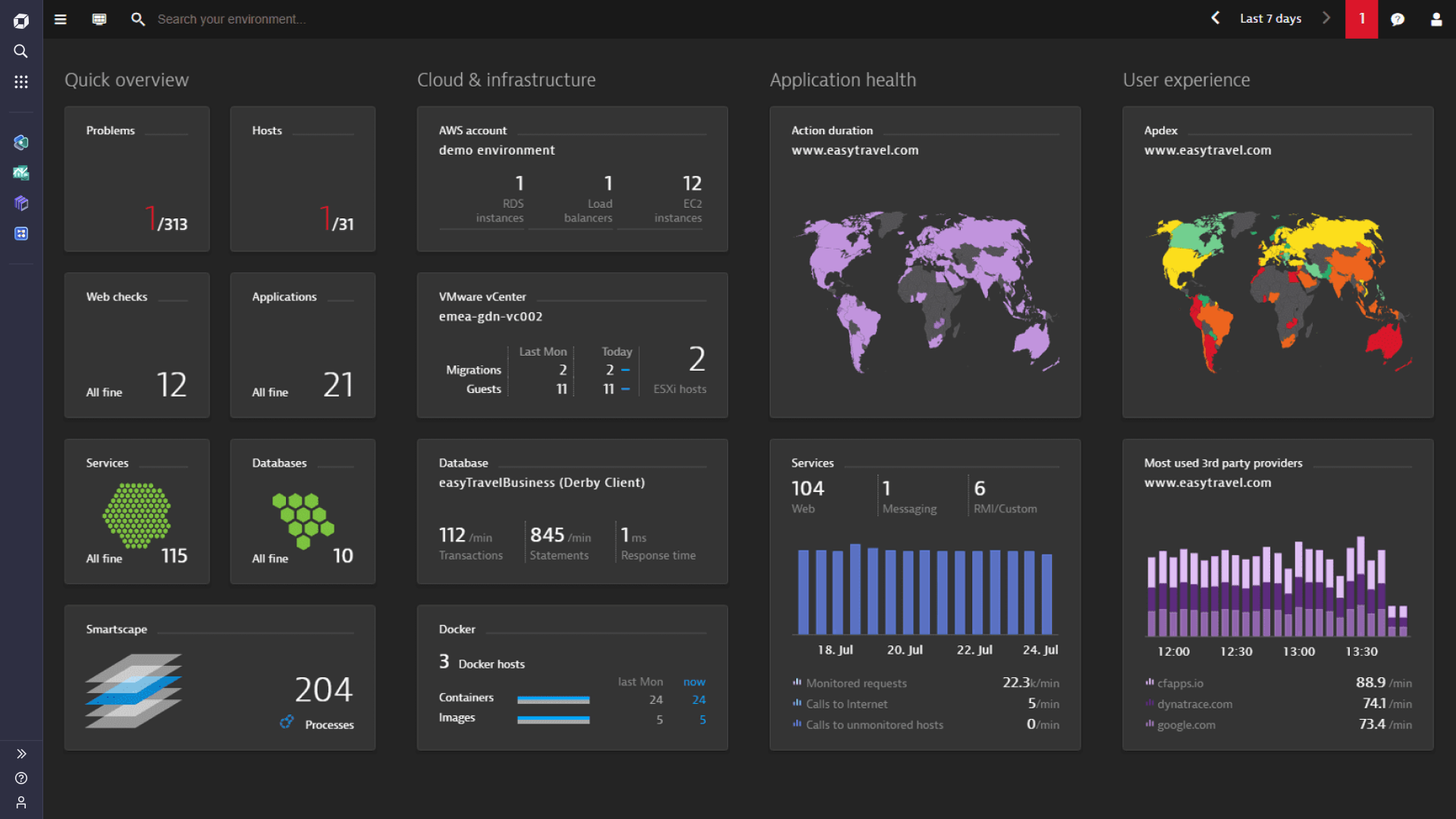
- Datadog Event Management – If you’re neck-deep in micro-services, its automated event correlation chops help slash alert noise.
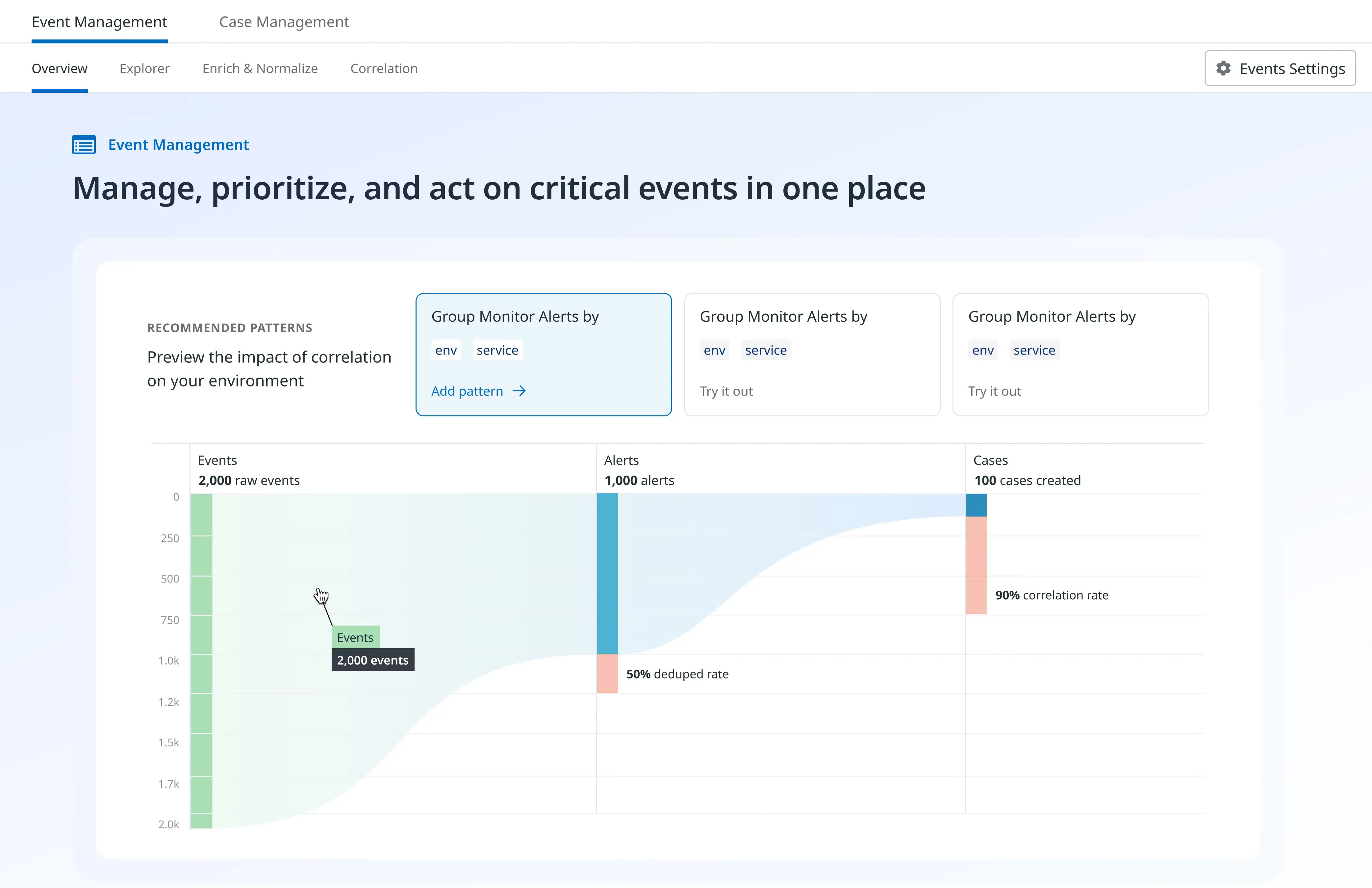
- Splunk Observability Cloud – Merges logs, metrics, and traces, then layers ML for anomaly detection—all inside the wider Splunk ecosystem (handy if you already lean on Splunk for SIEM).
- Moogsoft – One of the early pioneers; still loved for rapid noise reduction and collaboration-friendly incident workflows—a solid pick if you want the best aiops platform for lean SRE teams.
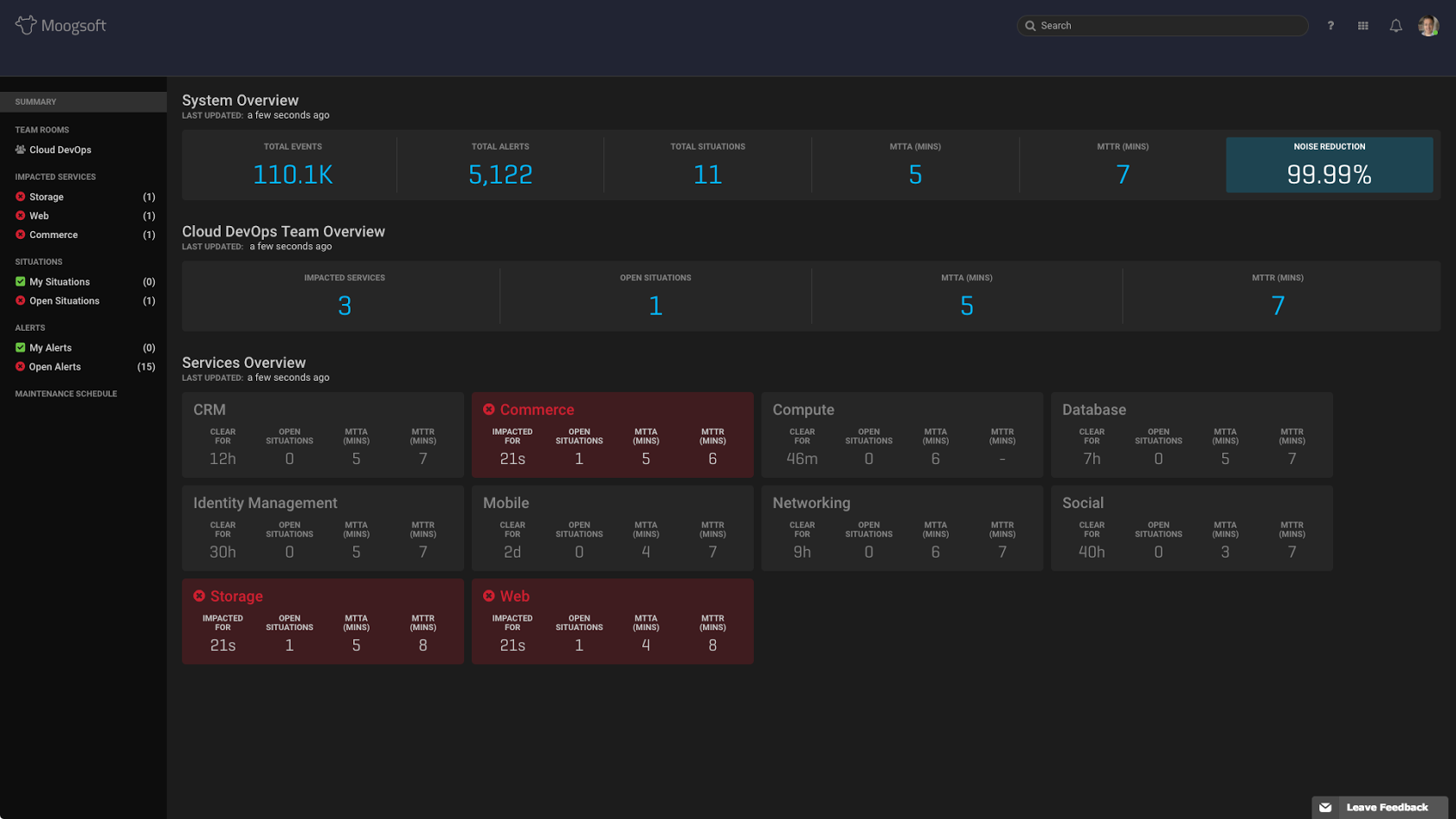
- BigPanda – Focuses on intelligent triage; its AI/ML engine groups related alerts and enriches them with context so humans jump straight to fixing.
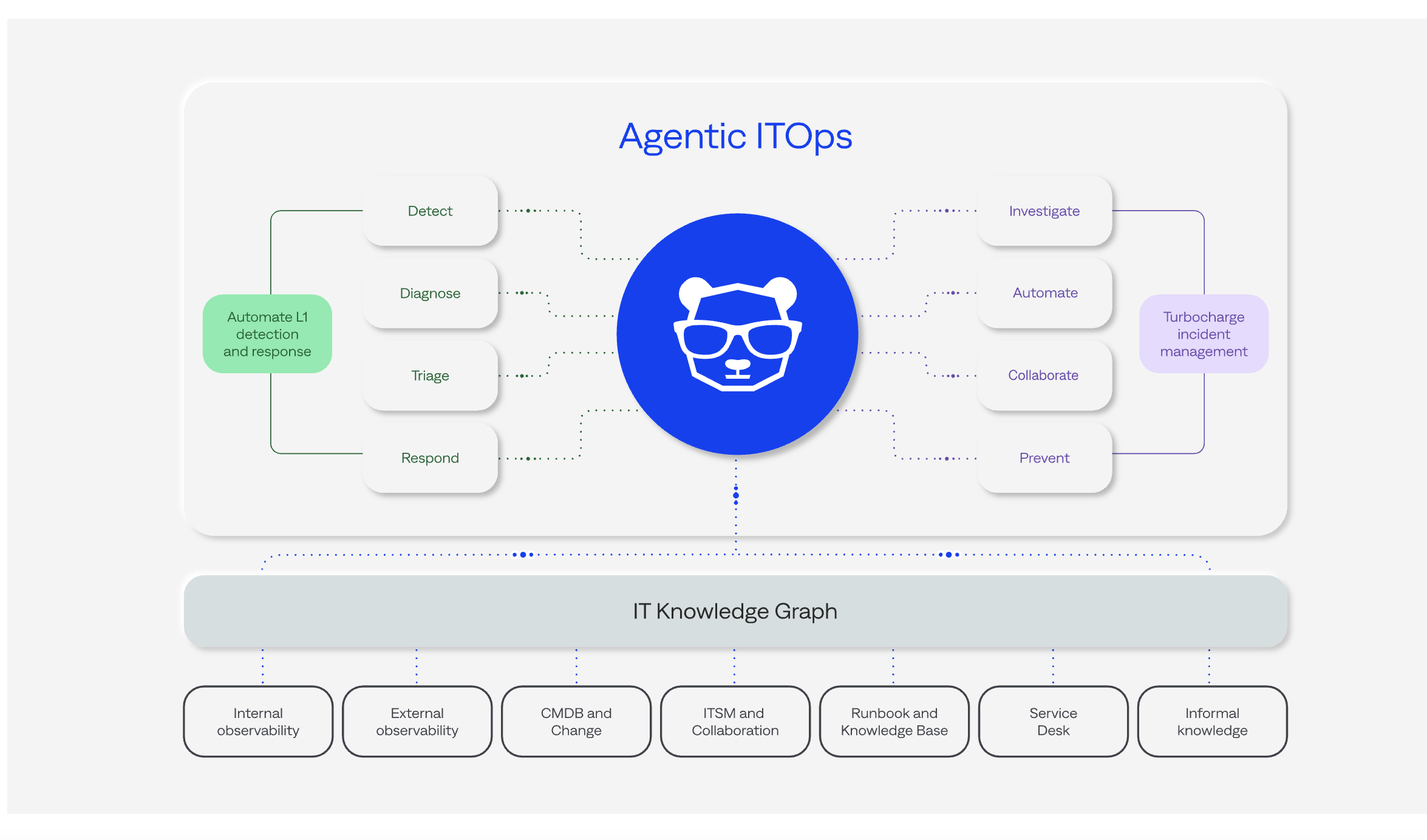
- LogicMonitor (Envision + Edwin AI) – Pushes “agentic AIOps,” claiming up to 90 % alert-noise reduction and automated fixes via its Edwin AI agent—worth a look if you’re chasing proactive remediation at scale.
- IBM Instana – IBM’s full-stack observability play, recently tagged a leader in the 2025 Gartner Magic Quadrant; shines when you need deep code-level insights plus AI-driven root-cause analysis.
- Cisco AppDynamics / Cisco AIOps – Now rolled into Cisco’s broader Observability Platform; pairs business-level metrics with AI-backed anomaly detection—attractive for enterprises already deep in Cisco networking.
Do these eight exhaust the aiops platform for large enterprise crowd? Hardly. But they frame the conversation—SaaS-first upstarts alongside heavyweight suites, each carving a niche. Use them as conversation starters, then map features, pricing, and cultural fit against your own stack to decide which one is truly the best aiops platform for you—not just for somebody else’s slide deck.
Final Thoughts
The world of IT operations is evolving, and AIOps platforms are at the forefront of that change. It’s not hype to say that AI can be transformative here – but it’s also not a plug-and-play miracle cure. Think of an AIOps platform as a powerful new team member: one that needs onboarding, training, and the right guidance to reach its full potential. When carefully chosen and implemented, though, it becomes a trusted ally that augments your human experts. You get the speed and pattern-crunching prowess of AI working hand-in-hand with human insight, leading to more resilient systems and saner workdays.
For CTOs and business decision-makers, AIOps platforms offer a way to turn IT operations from a cost center into a competitive advantage. They help ensure your digital services are always on, performing well, and able to scale with demand – which translates directly to better customer experiences and revenue protection. For the DevOps and SRE folks in the trenches, AIOps can offload the drudgery and let you focus on creative problem-solving rather than babysitting dashboards. It’s about working smarter, not harder.
As you navigate the AIOps platform market, keep a human perspective. Don’t just ask which tool has the coolest algorithms; ask which one solves the problems that keep you up at night. The best solution will be the one that feels like it was made for your team, your workflows, your business – not just the one with the most features or the biggest brand name. We’re all still learning in this space, and there’s no shame in starting small and iterating. What matters is embracing the mindset that AI-driven operations are the future (or arguably, the present). After all, the challenges of modern IT aren’t going away, and our human operators deserve all the help they can get.
In the end, adopting an AIOps platform is about more than technology – it’s a strategic step toward resilience and innovation in the digital age. And who knows? With the right platform in place, those 3 AM outage calls might just become a rarity. Wouldn’t that be a welcome change?

.png)
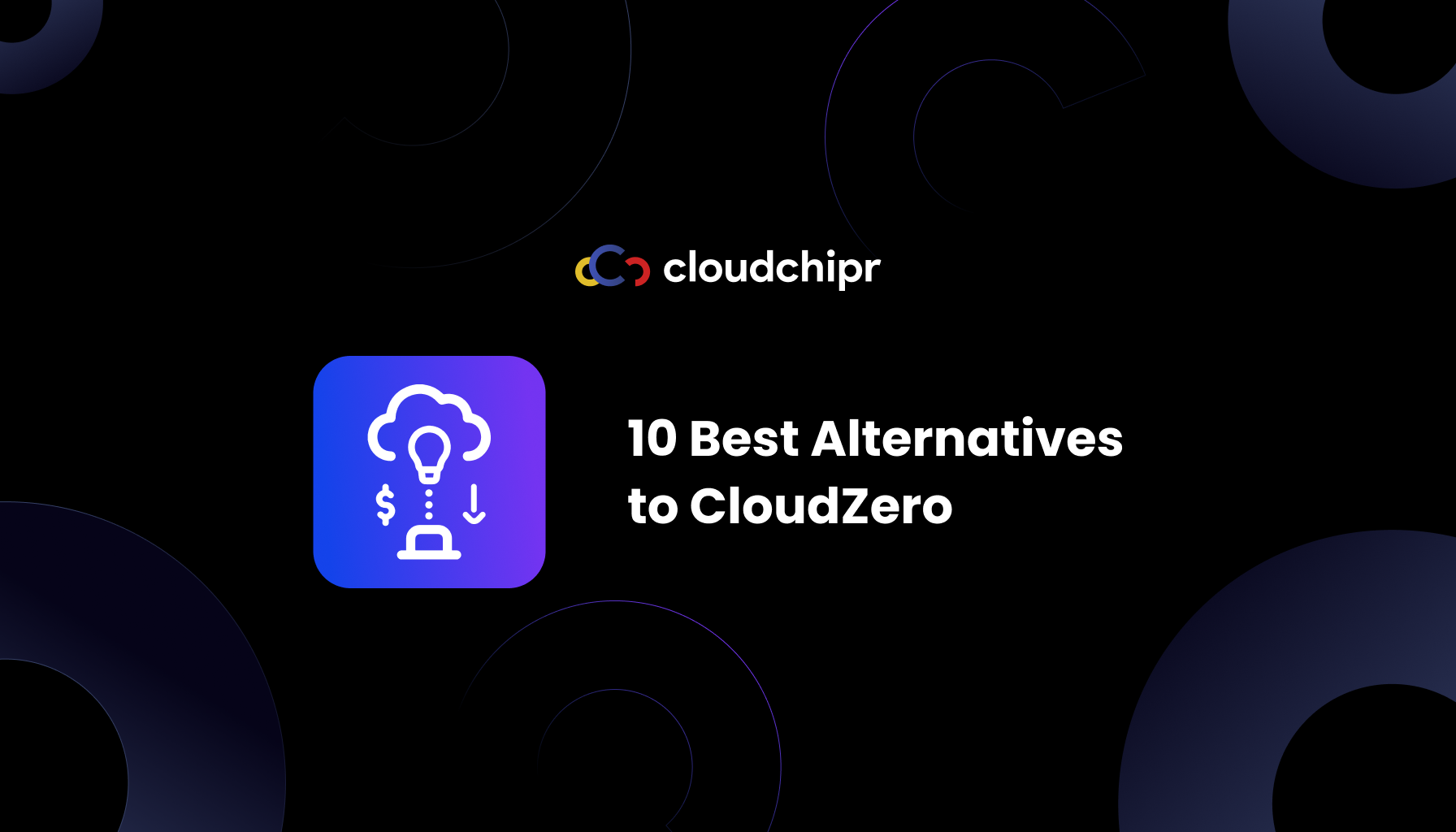
.png)
.png)